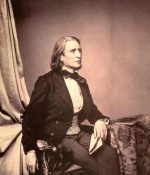Franz Liszt (1811-1886) was a Hungarian composer, pianist, and conductor, considered one of the most prominent and influential composers and pianists of the Romantic era. Liszt was renowned for his incredible piano virtuosity. He pushed the boundaries of piano technique during his time and played a crucial role in the development of modern piano playing. Some of Liszt's most famous piano compositions include "Hungarian Rhapsodies," the "Piano Sonata in B Minor," "Transcendental Études," and the "Mephisto Waltzes."
@ 2007-2024 All Rights Reserved | WrittenMelodies.com

